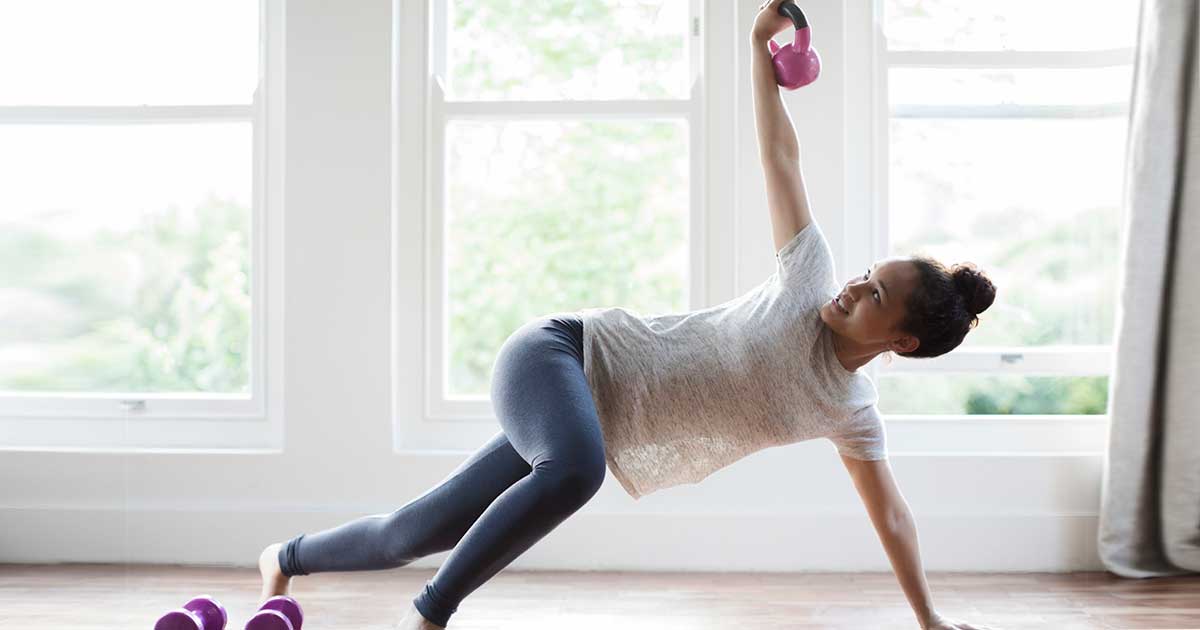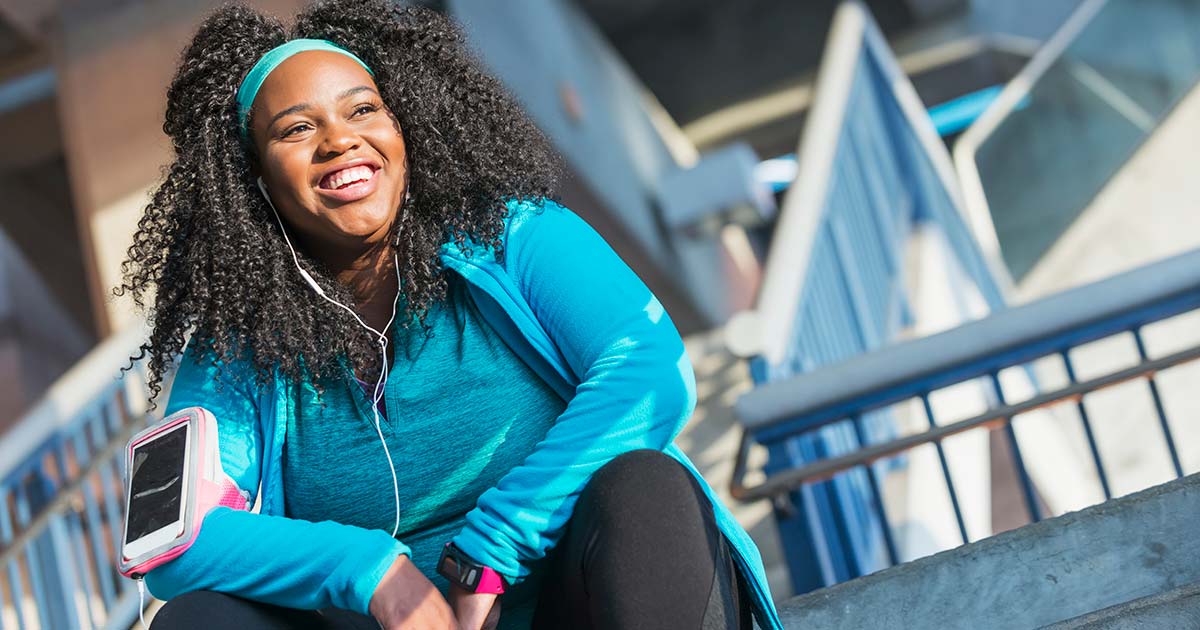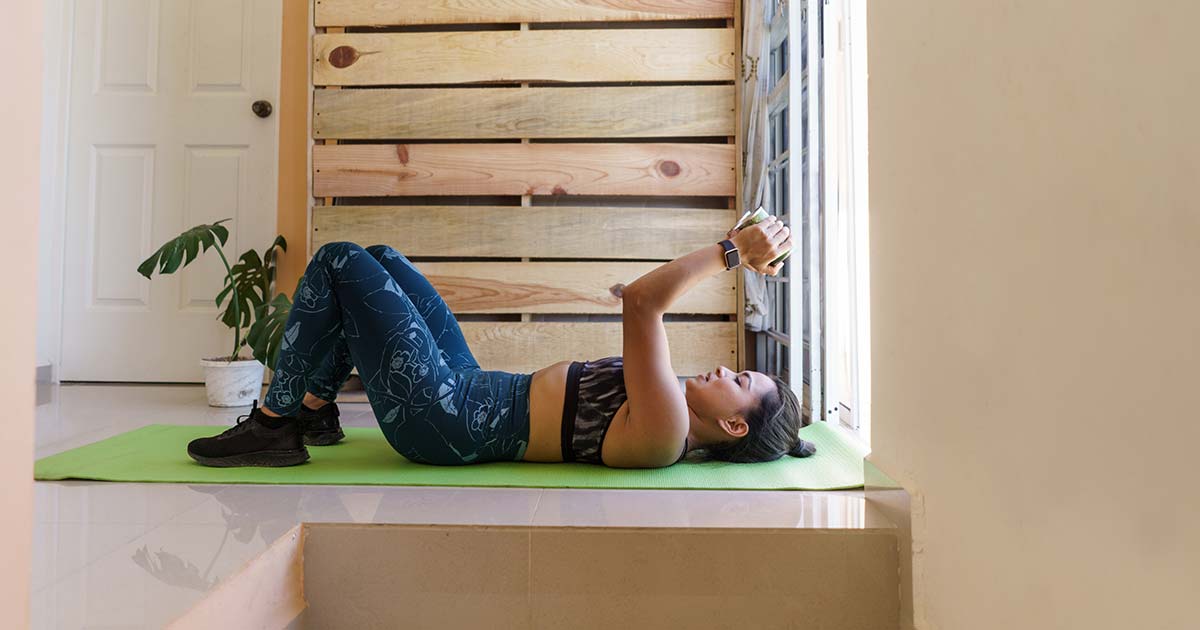
Advice to improve your movement, fitness, and overall health from the #1 in orthopedics in the U.S.
10 Ways to Make Sure You Work Out Through the Winter
Don’t let colder temps chill your exercise routine. Try these tips from HSS exercise physiologist Chelsea Long to transition from outdoor to indoor workouts.
Advice to improve your movement, fitness, and overall health from the #1 in orthopedics in the U.S.

But it’s important to keep active, even as the temperatures dip. “In the colder months our bodies turn to conservation mode and we tend to gain weight,” says HSS exercise physiologist Chelsea Long, MS, CSCS. “We also don’t get as much vitamin D and we often feel run down.” To keep your metabolism revving and energy levels high, you need to keep your activity levels consistent, she says. Plus, exercise releases endorphins — nature’s feel-good chemicals — which can help boost your mood no matter how dark the days seem.
To make sure the cold weather won’t freeze out your exercise plan, here are 10 tips to help keep you going all season long.
1. If you’re a morning exerciser, set everything out the night before. Pull your workout clothes out of the drawers, get your water bottle ready and make sure your electronics are charged and your exercise playlist cued up. “It’s much harder to skip a workout when you’ve already committed to it,” says Long.
2. Dedicate a workout space in your house. Distractions …. Well, they distract. “You want to have a place where no one can bother you unless it’s an emergency,” says Long. “Just like when you’re on a Zoom meeting with co-workers and no one’s allowed to disturb you, when you go into your exercise space, that’s your time to be alone,” she says. Even a corner of a living room counts, if you set your boundaries.
3. Invest in a piece of equipment you love. The best thing you can buy is the one you’re going to use. If you’re a cardio fanatic, you should probably have a bike, treadmill or rower. If you enjoy strength training, get some dumbbells, kettlebells or resistance bands. If you like to do core work, make sure you have an exercise mat. “I also think that having a mirror in your gym space is the best way to keep you motivated and make sure you stay safe with your form and technique,” says Long. If you don’t have the budget for a big-ticket item, check Facebook Marketplace, Craigslist or another resale site for gently used workout gadgets looking for new homes.
4. Make a deal with yourself. If you just don’t feel like working out, tell yourself that you’ll just do a five-minute warm up. Chances are once you get started you won’t want to stop.
5. Tweak your mindset. If you’re used to running a few miles a day and expect to get the same results from an indoor workout, you may be disappointed. Instead, Long suggests you focus on workouts that address the weaknesses that may not show up when you exercise outdoors. So, for example, if you’re a runner with flexibility issues, try more yoga and Pilates during the winter. If you’ve had a recent injury, focus on strength work indoors. “Create an indoor experience that you enjoy just as much as the outdoor one, which is what’s going to help you make that transition and keep you accountable,” she adds.
6. Don’t beat yourself up if you skip a day. Exercise isn’t an all-or-nothing affair. If you miss a day, or even a few days, of exercise, that doesn’t mean all is lost. Remember that days off are just as important as days on. “Rest days are when your muscles repair and rebuild,” says Long. “That’s when the changes are made.” The American Heart Association recommends getting at least 150 minutes of moderate-intensity aerobic activity per week — that works out to be 30 minutes, five days a week — plus moderate- to high-intensity muscle-strengthening activity (such as resistance bands or weights) on at least two days per week.
7. Find an indoor pool. Swimming is a great low-impact cardio option. And a warm pool may be just what you want when it’s freezing outside.
8. Use social media to your advantage. If you’re still less than enthusiastic about going to the gym but need to connect with others to keep you going, there are plenty of ways to get support. “Social media has a way of creating friends you never actually meet in person,” says Long. “It’s a great way to find a like-minded community, and it helps you stay accountable because you become invested in that community.” Do a search on Facebook for “fitness groups” or follow fitness or workout hashtags on Instagram. If you can’t find what you want, start your own group.
9. Take it outside. Winter temps don’t mean you have to work out inside. If you want to go outside, go! Just make sure to dress in layers so you can unzip and strip as your body heats up. Drink plenty of fluids, since you may not feel as thirsty in the cold. Start your workout slowly. Cold weather tightens your muscles and increases the risk of injury. And if you’re going out at dawn or dusk, wear light-colored clothing or a reflective vest.
10. Make everyday tasks a workout. When you’re not moving around as much outside, you want to move around more inside. Turn the music up loud as you vacuum your house and exaggerate the movements, do some extra squats while you make the beds, plank during commercial breaks while watching television, do some heel raises while brushing your teeth. “Short little adds throughout your day will improve your posture, better your bones, and increase your overall mobility and flexibility,” says Long.
Published 11/16/2021


